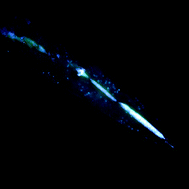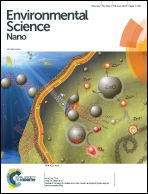Toxicity of halloysite clay nanotubes in vivo: a Caenorhabditis elegans study†
Abstract
Here we investigated the toxicity of halloysite clay nanotubes in vivo employing a Caenorhabditis elegans nematode as a model organism. Using enhanced dark-field microscopy and physiological tests, we found that halloysite is localised exclusively in the alimentary system and does not induce severe toxic effects on nematodes.

- This article is part of the themed collection: Nanotoxicology

 Please wait while we load your content...
Please wait while we load your content...